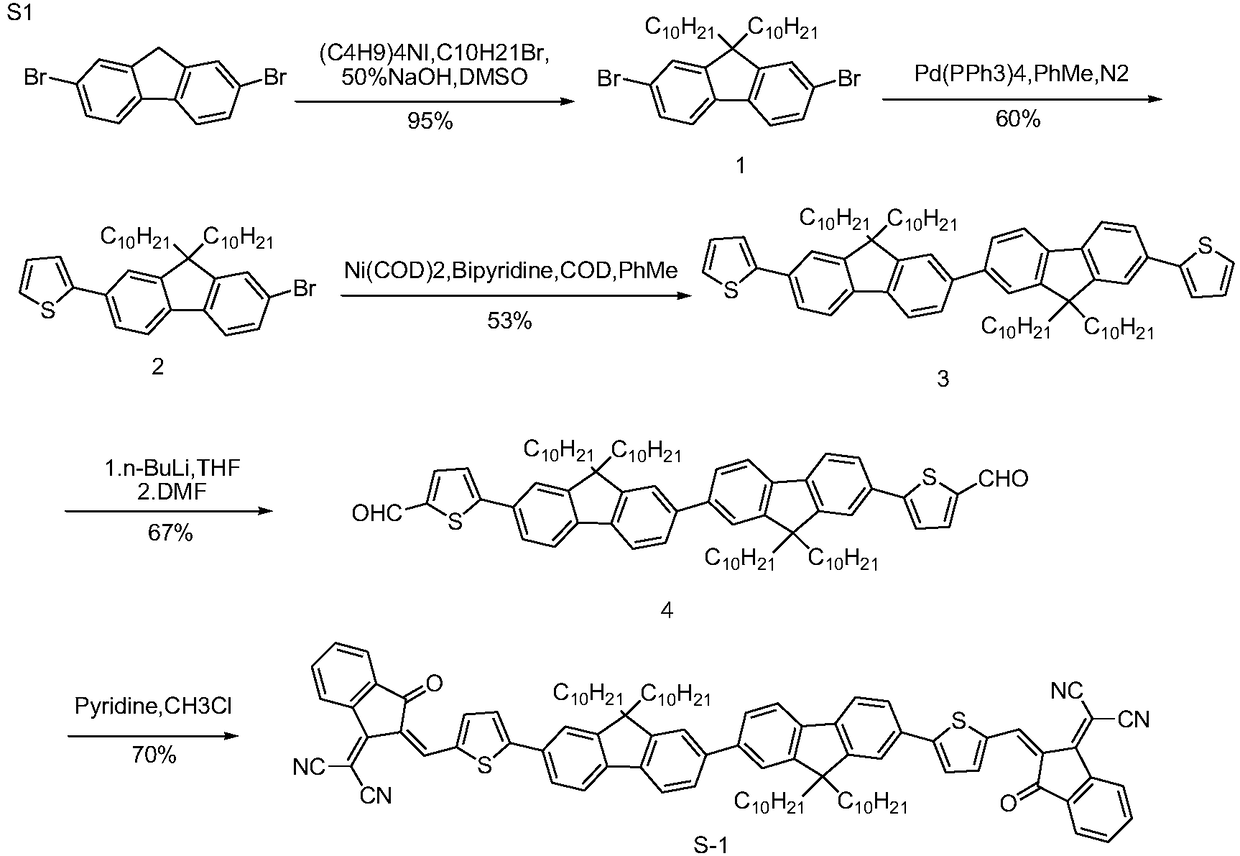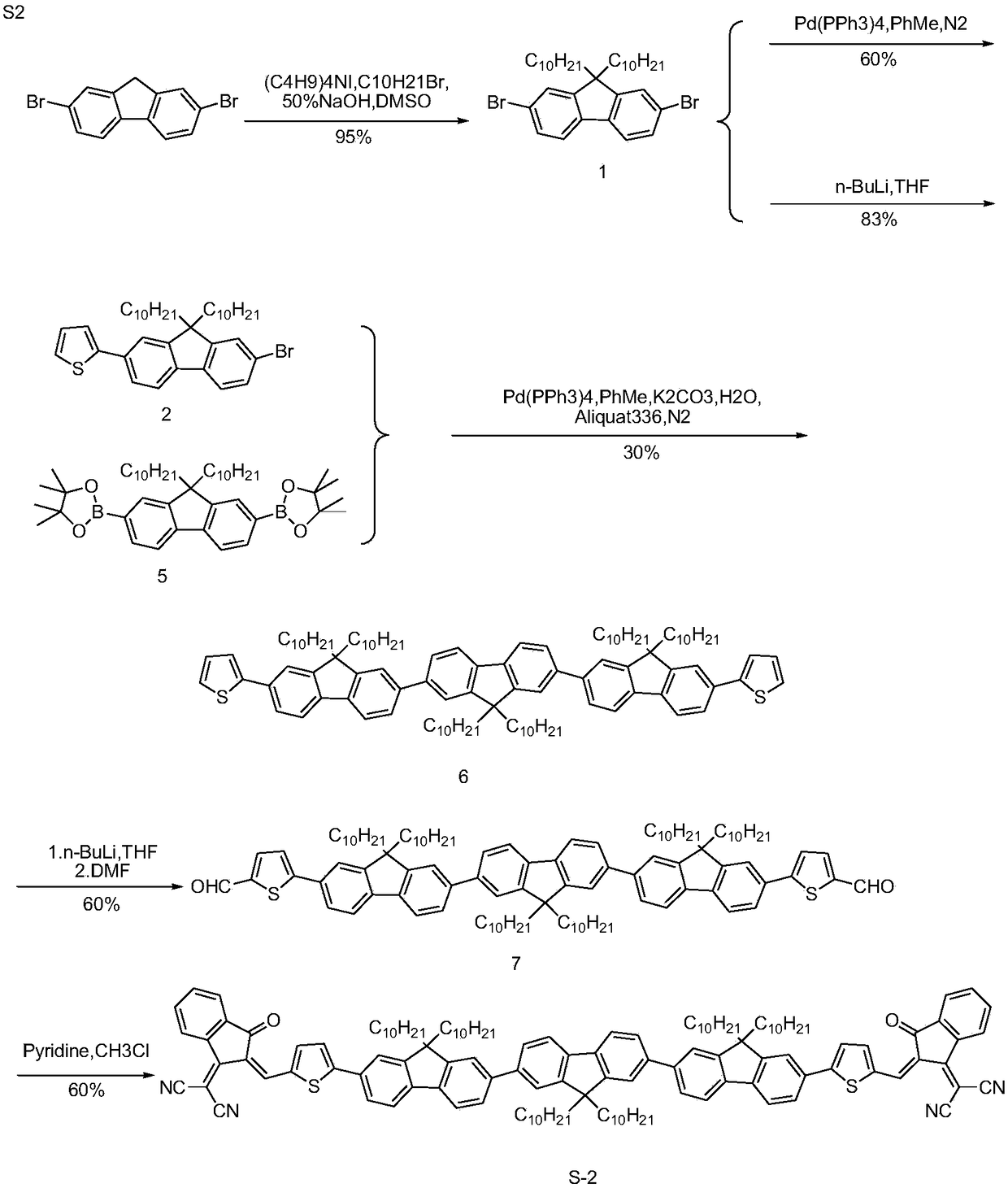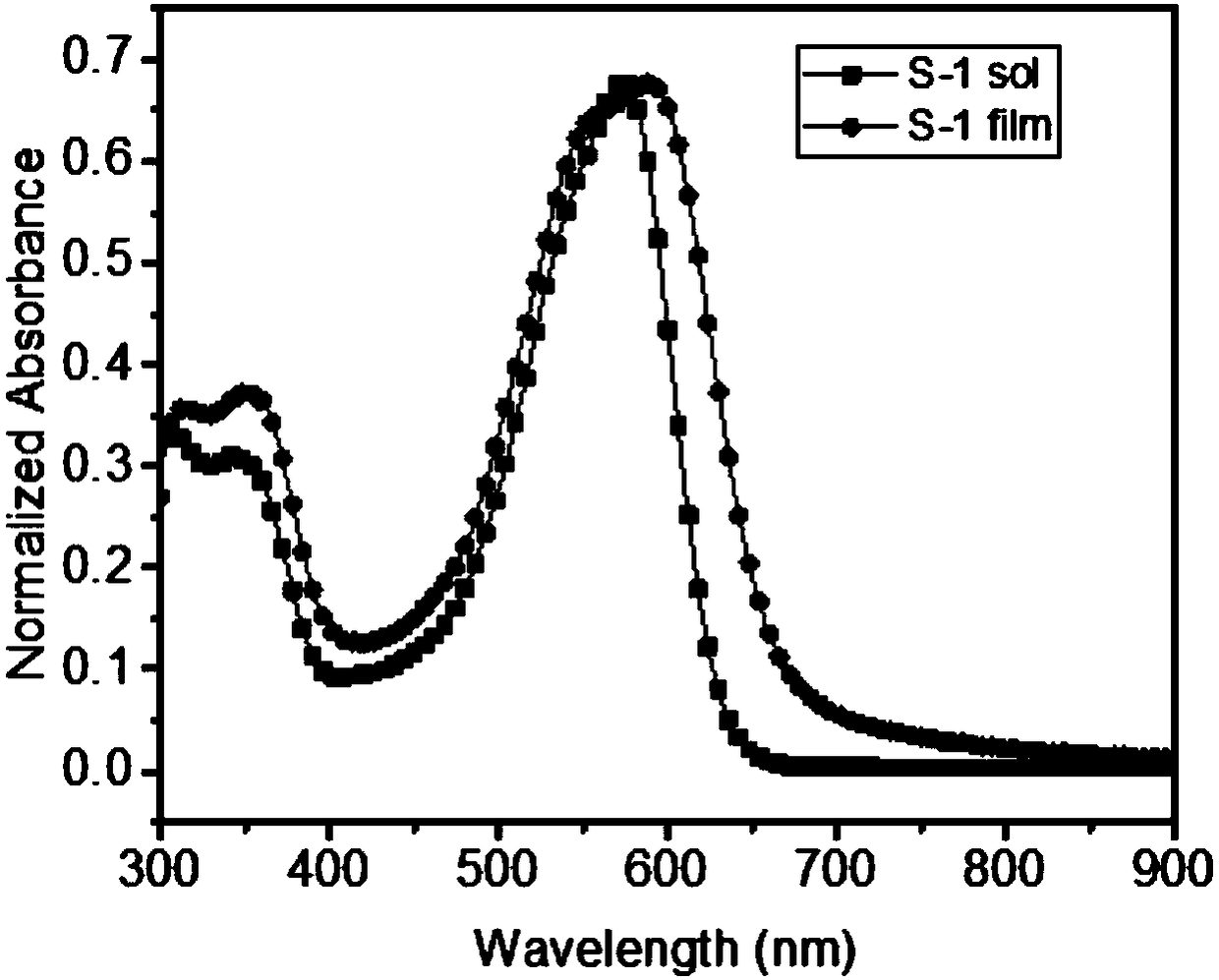Novel fluorine organic solar battery acceptor material as well as preparation method and application thereof
A technology for solar cells and acceptor materials, applied in the field of organic solar cell materials, can solve problems such as unfavorable commercial application, difficult preparation process, complex substructure, etc., achieve good visible light absorption range and absorption intensity, and synthetic raw materials are cheap and easy to obtain. , the effect of simple molecular structure
- Summary
- Abstract
- Description
- Claims
- Application Information
AI Technical Summary
Problems solved by technology
Method used
Image
Examples
Embodiment 1
[0047] A fluorene-based organic solar cell acceptor material S-1, the chemical structural formula of which is:
[0048]
[0049] The above-mentioned fluorene organic solar cell acceptor material S-1, the preparation method is as follows (the preparation route is as follows: figure 1 shown):
[0050] (1) Synthesis of Compound 1: Get a 250ml double-necked round-bottomed flask, treat it anhydrous and oxygen-free, add 2,7-dibromofluorene (15mmol) successively, tetrabutylammonium iodide (30wt%, 4.5mmol), pump Inflate nitrogen 3 times, inject 50ml DMSO and 30ml 50wt% NaOH solution under nitrogen protection, heat to 100°C, react overnight, TLC monitoring; post-treatment: stop the reaction, cool to room temperature, transfer to a 500ml separatory funnel, 100ml 10% (volume concentration) washed with dilute hydrochloric acid (slowly added, careful exotherm), extracted with petroleum ether, washed the organic phase with saturated brine 50ml*3, dried and concentrated the organic phase...
Embodiment 2
[0056] A fluorene-based organic solar cell acceptor material S-2, the chemical structural formula of which is:
[0057]
[0058] The above-mentioned fluorene organic solar cell acceptor material S-2, the preparation method is as follows (the preparation route is as follows: figure 2 shown):
[0059] (1) The synthesis of compound 1 and compound 2 is the same as in Example 1;
[0060] (2) Synthesis of Compound 5: Take a 250ml double-necked flask, treat it with anhydrous and anaerobic treatment, add Compound 1 (16mmol) and 100ml of anhydrous THF, stir at -78°C for 15min, add n-BuLi (2.5eq, 16ml, 40mmol), stirring reaction; after reacting for 1.5h, add isopropanol borate (4eq, 64mmol), turn off the refrigeration, react overnight, TLC monitoring; aftertreatment: stop reaction after 9h, add water to quench, dichloromethane extraction, Drying and concentration, silica gel column chromatography, petroleum ether / ethyl acetate=20 / 1 as eluent, obtained pure white solid product Comp...
PUM
 Login to View More
Login to View More Abstract
Description
Claims
Application Information
 Login to View More
Login to View More - R&D
- Intellectual Property
- Life Sciences
- Materials
- Tech Scout
- Unparalleled Data Quality
- Higher Quality Content
- 60% Fewer Hallucinations
Browse by: Latest US Patents, China's latest patents, Technical Efficacy Thesaurus, Application Domain, Technology Topic, Popular Technical Reports.
© 2025 PatSnap. All rights reserved.Legal|Privacy policy|Modern Slavery Act Transparency Statement|Sitemap|About US| Contact US: help@patsnap.com



